 slide1 ==> 11.1: Jupiter seen from HST: cloud shapes in belts and zones, and the Great Red Spot (NASA)
slide1 ==> 11.1: Jupiter seen from HST: cloud shapes in belts and zones, and the Great Red Spot (NASA)
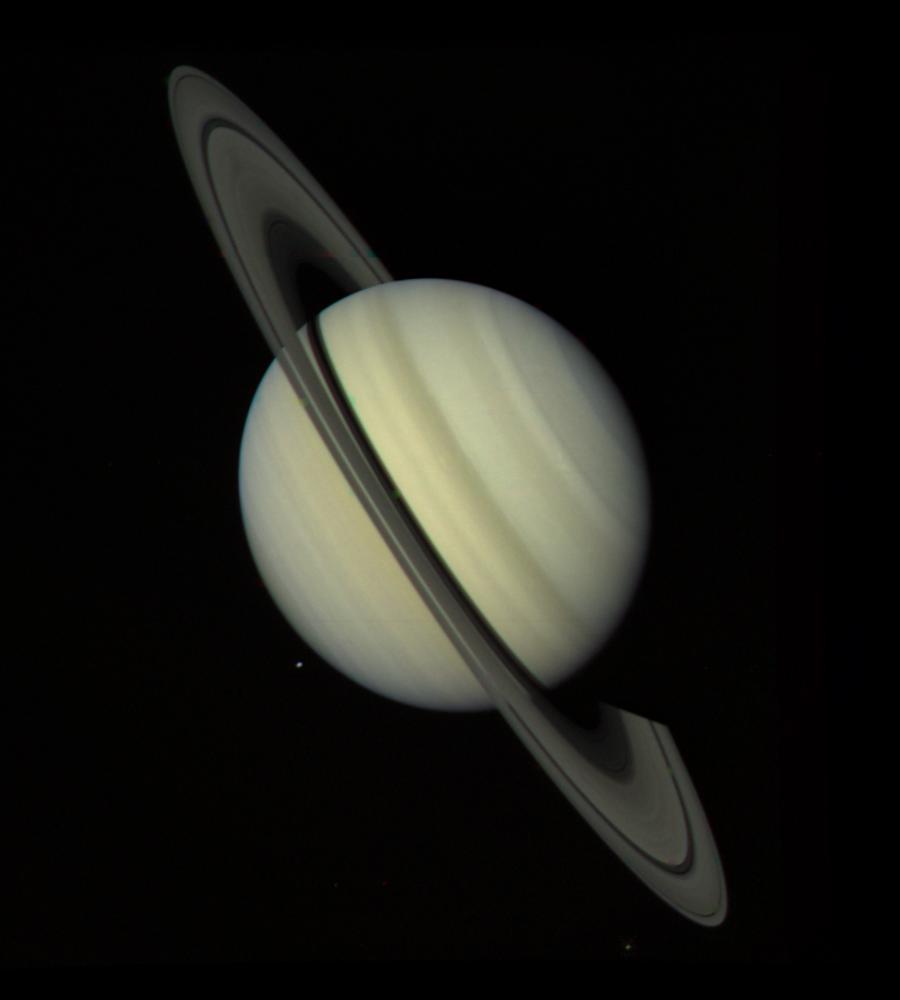 slide2 ==> 11.2: Saturn from Voyager: rings, and faint coloured bands like those seen on Jupiter (NASA)
slide2 ==> 11.2: Saturn from Voyager: rings, and faint coloured bands like those seen on Jupiter (NASA)
 slide3 ==> 11.3: Featureless Uranus, blue because atmospheric methane absorbs red light (NASA)
slide3 ==> 11.3: Featureless Uranus, blue because atmospheric methane absorbs red light (NASA)
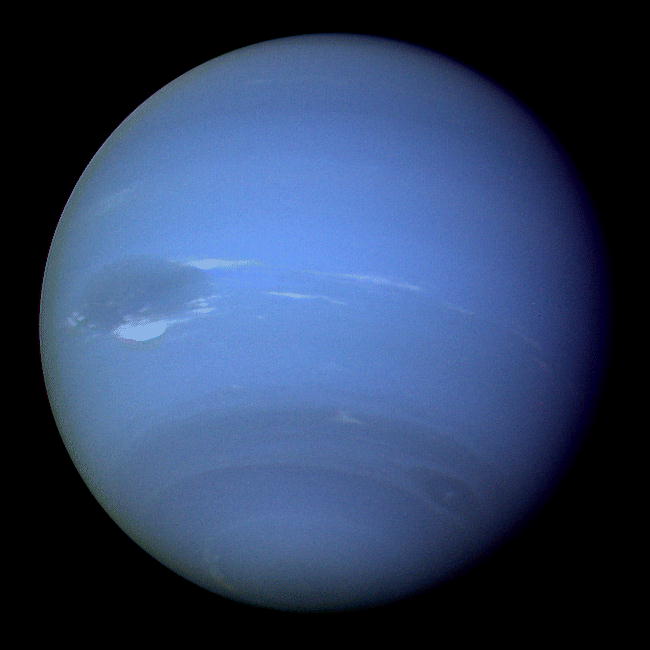 slide4 ==> 11.4: Neptune and the Great Dark Spot, a smaller storm, and clouds (NASA)
slide4 ==> 11.4: Neptune and the Great Dark Spot, a smaller storm, and clouds (NASA)
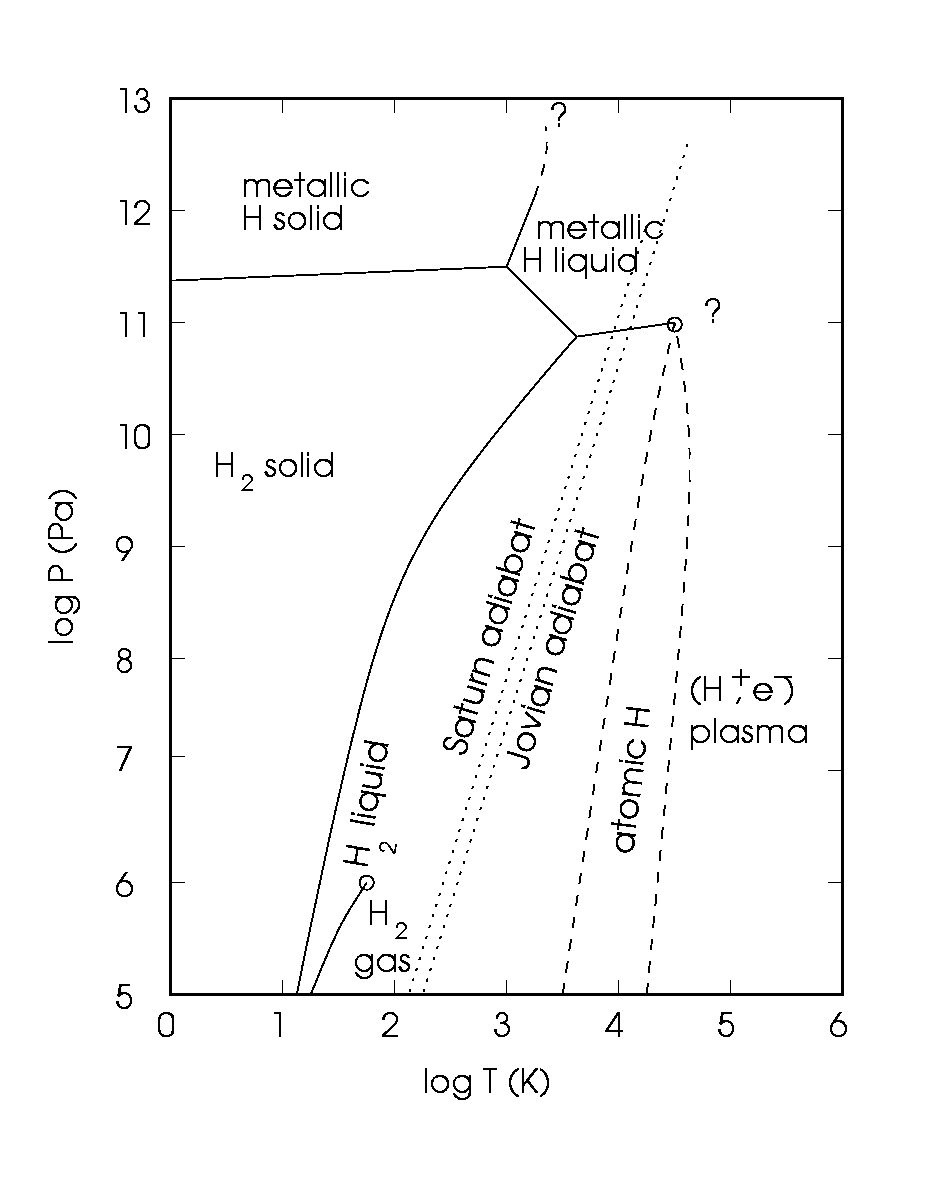 slide5 ==> 11.5: Phase diagram of H for a wide range of conditions; interiors of Jupiter and Saturn shown dotted
slide5 ==> 11.5: Phase diagram of H for a wide range of conditions; interiors of Jupiter and Saturn shown dotted
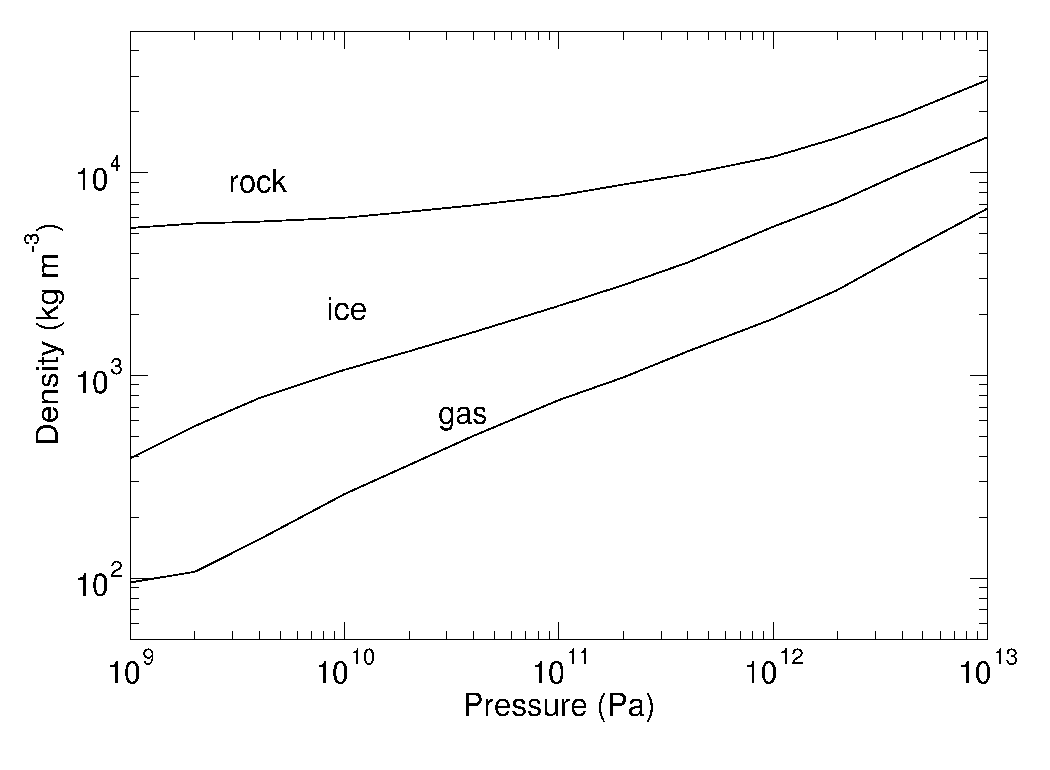 slide6 ==> 11.6: Density vs pressure for H-He gas, ice, and rock. Materials have temperatures appropriate to outer planets
slide6 ==> 11.6: Density vs pressure for H-He gas, ice, and rock. Materials have temperatures appropriate to outer planets
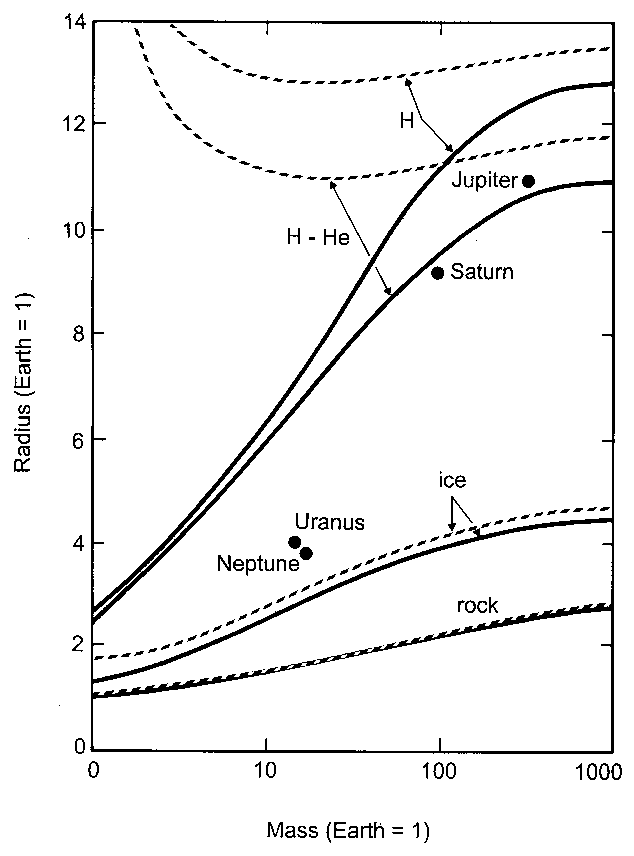 slide7 ==> 11.7: Radius vs mass for model planets at T = 0 K (solid) and for realistic temperatures (dashed)
slide7 ==> 11.7: Radius vs mass for model planets at T = 0 K (solid) and for realistic temperatures (dashed)
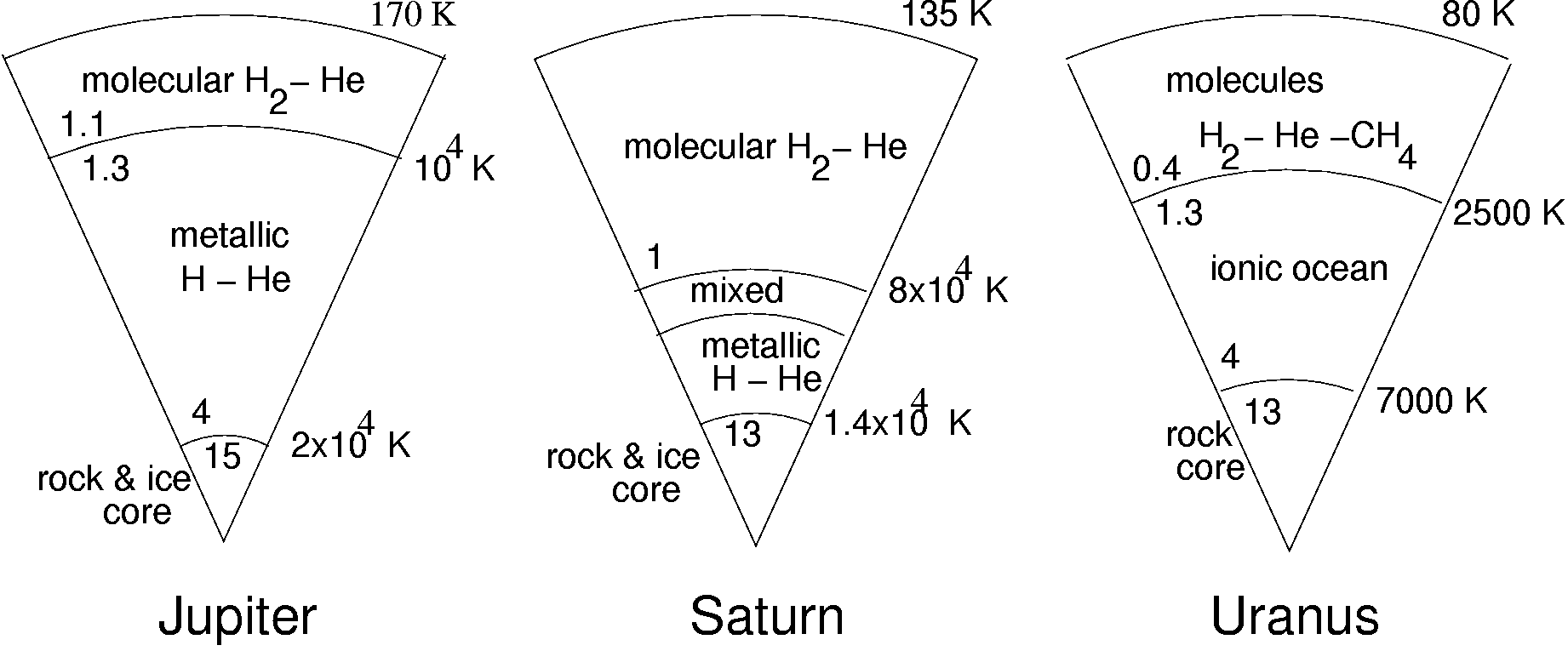 slide8 ==> 11.8: Interior state of Jupiter, Saturn, Uranus (densities on left side, tempertures on right)
slide8 ==> 11.8: Interior state of Jupiter, Saturn, Uranus (densities on left side, tempertures on right)
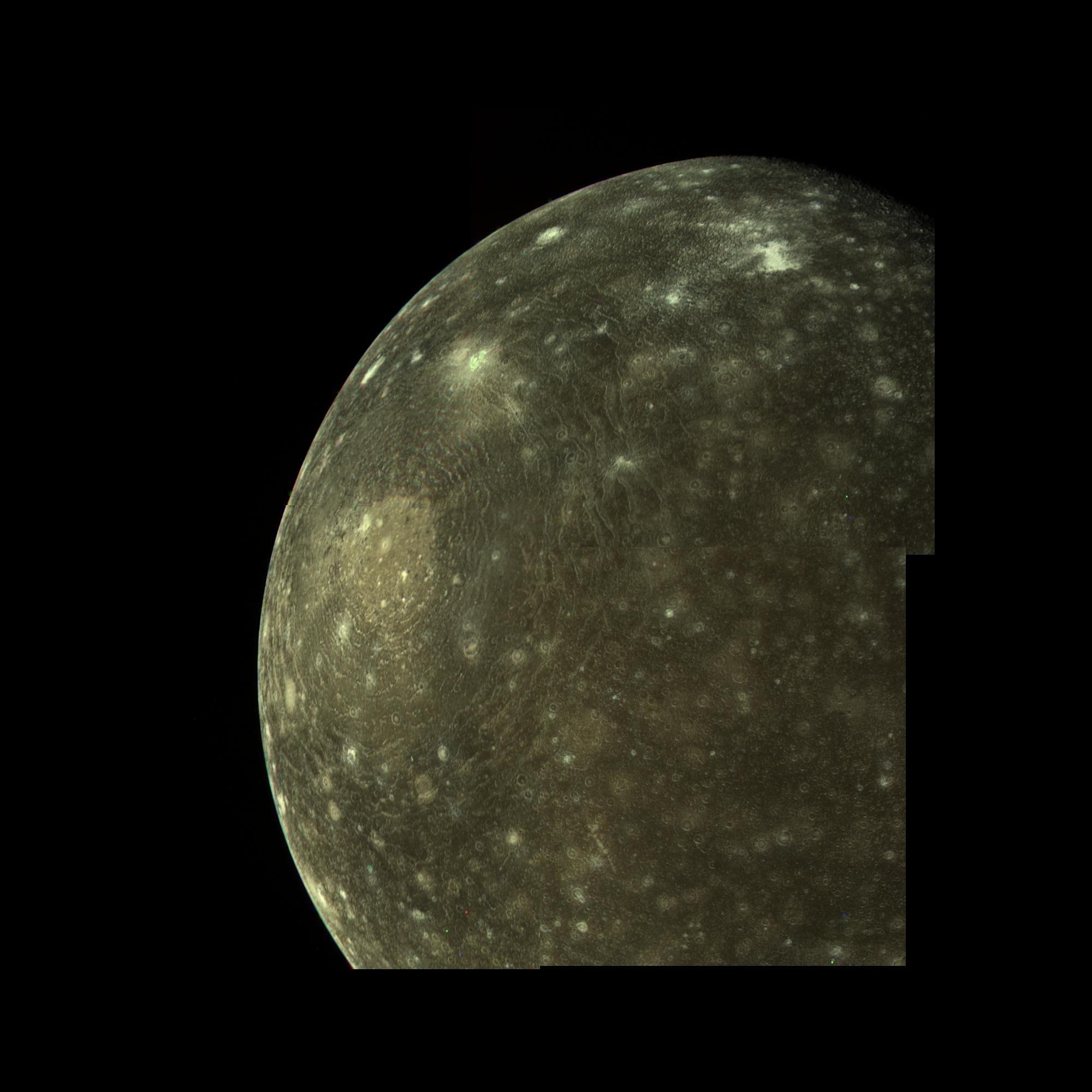 slide9 ==> 11.9: Jupiter's moon Callisto: the giant impact basin Valhalla (left centre), smaller craters (NASA)
slide9 ==> 11.9: Jupiter's moon Callisto: the giant impact basin Valhalla (left centre), smaller craters (NASA)
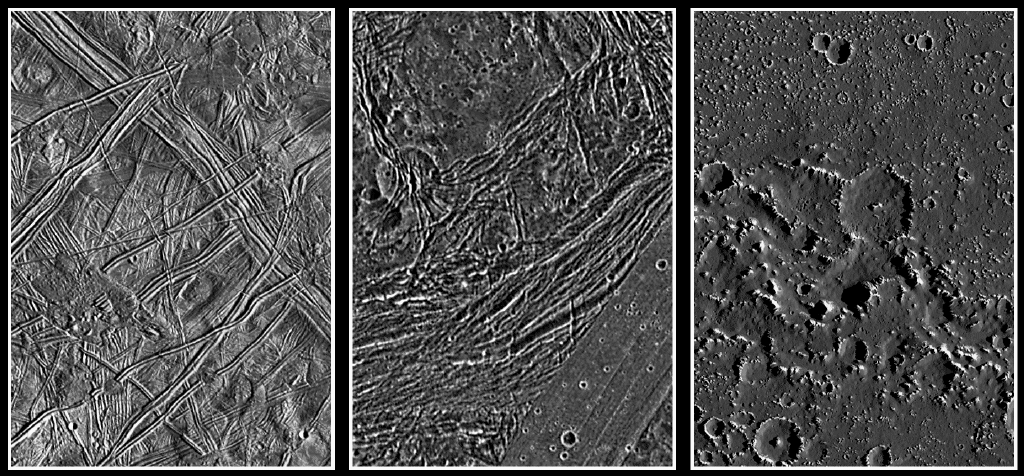 slide10 ==> 11.10: Surface regions (100 km top to bottom) on Jupiter's moons Europa (left), Ganymede, Callisto (NASA)
slide10 ==> 11.10: Surface regions (100 km top to bottom) on Jupiter's moons Europa (left), Ganymede, Callisto (NASA)
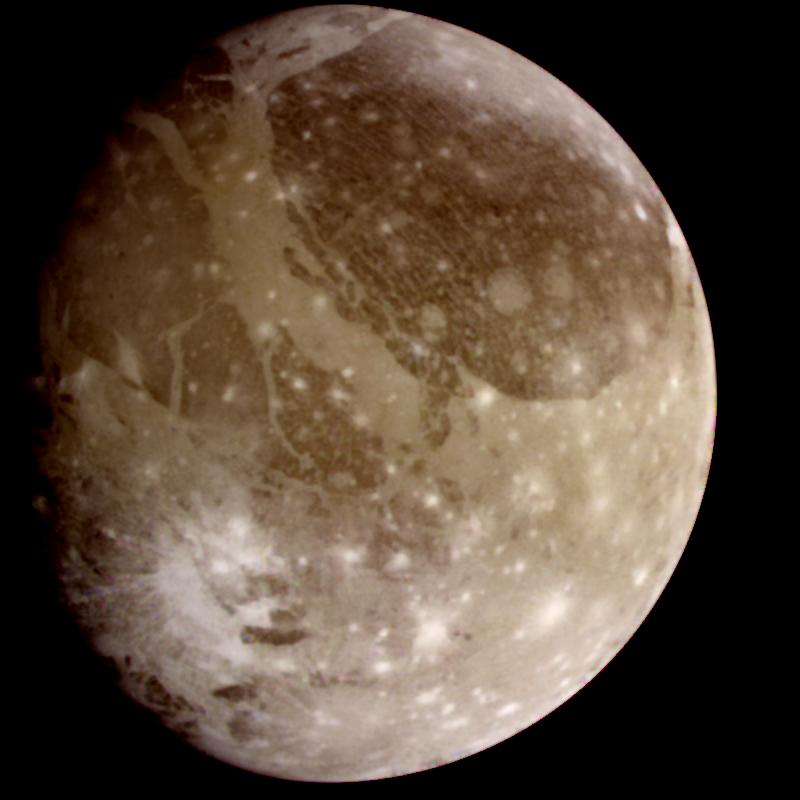 slide11 ==> 11.11: Jupiter's moon Ganymede: dark and cratered terrain, broken by grooved network terrain (NASA)
slide11 ==> 11.11: Jupiter's moon Ganymede: dark and cratered terrain, broken by grooved network terrain (NASA)
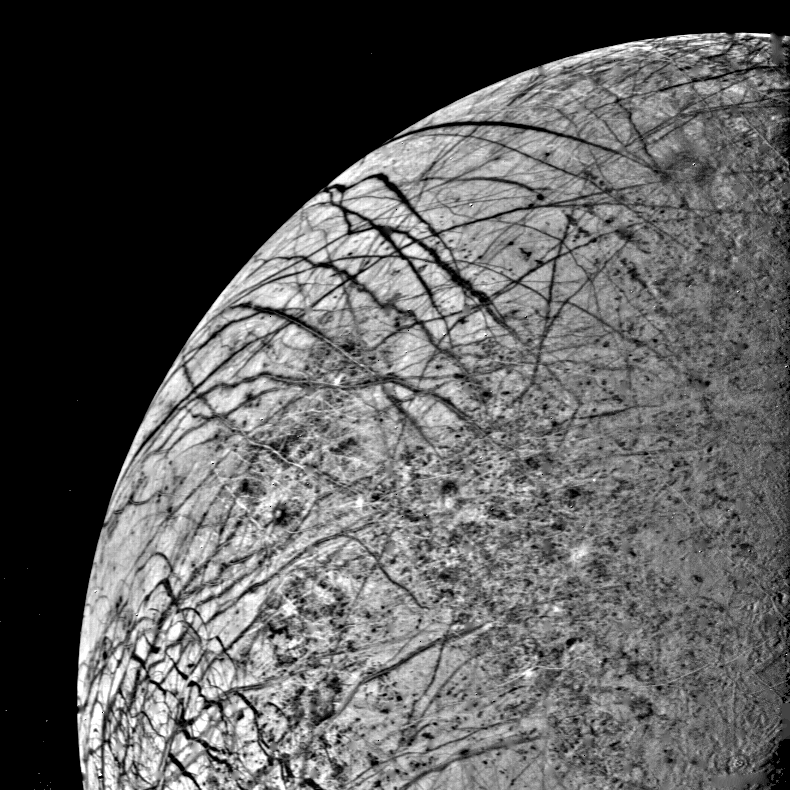 slide12 ==> 11.12: Dark lines criss-crossing the icy surface of Jupiter's moon Europa (NASA)
slide12 ==> 11.12: Dark lines criss-crossing the icy surface of Jupiter's moon Europa (NASA)
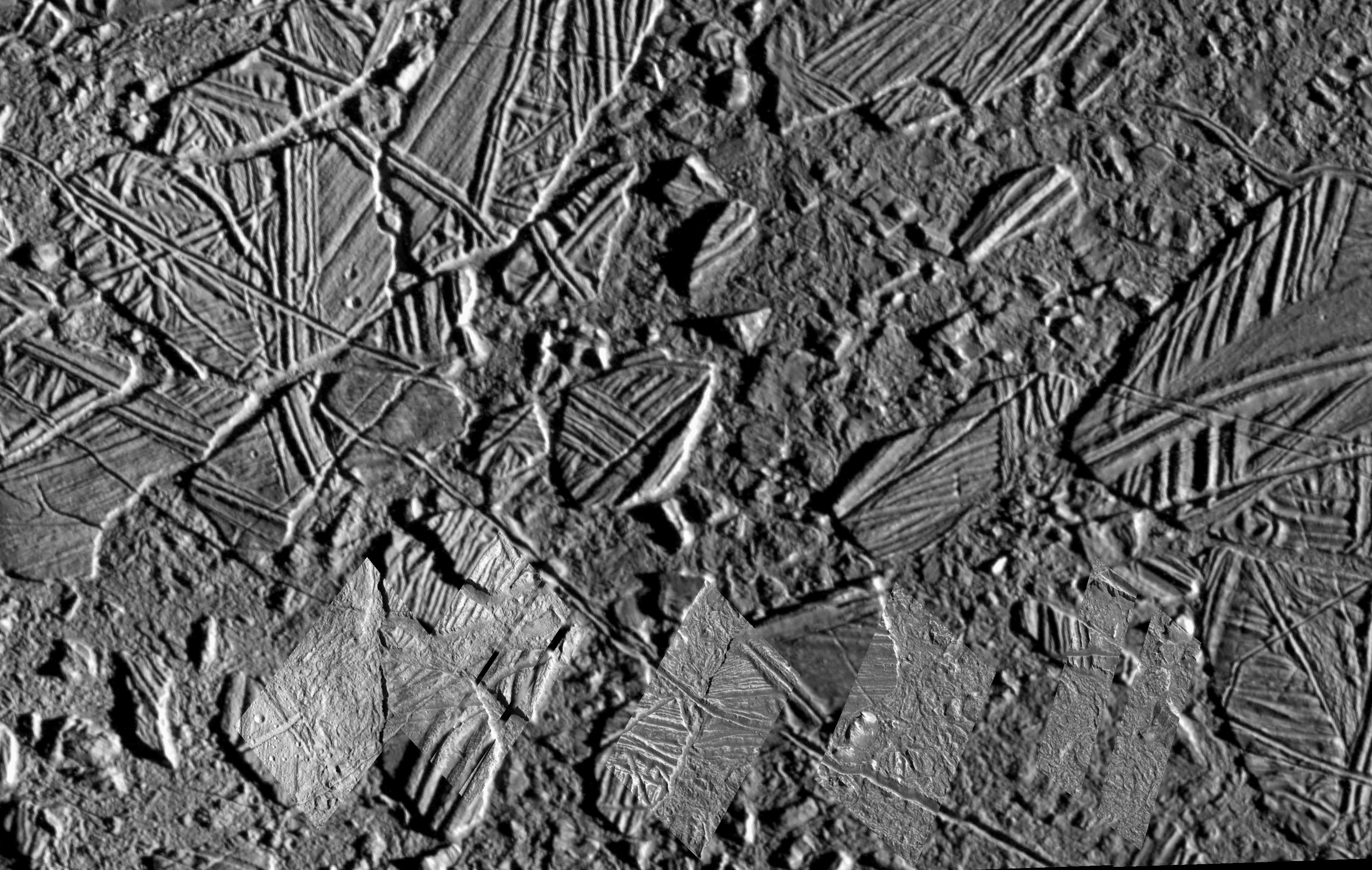 slide13 ==> 11.13: Chaos region 35 x 50 km on Europa: crumpled and refrozen ice floes (NASA)
slide13 ==> 11.13: Chaos region 35 x 50 km on Europa: crumpled and refrozen ice floes (NASA)
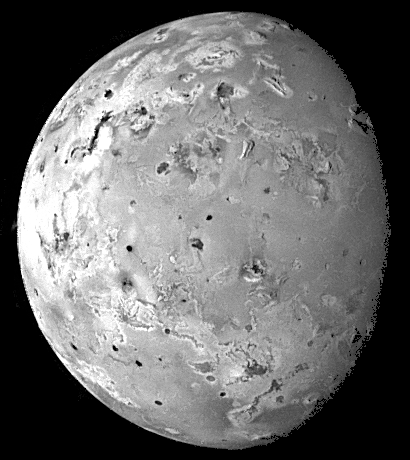 slide14 ==> 11.14: The patchy, lava-covered surface of Jupiter's moon Io (NASA)
slide14 ==> 11.14: The patchy, lava-covered surface of Jupiter's moon Io (NASA)
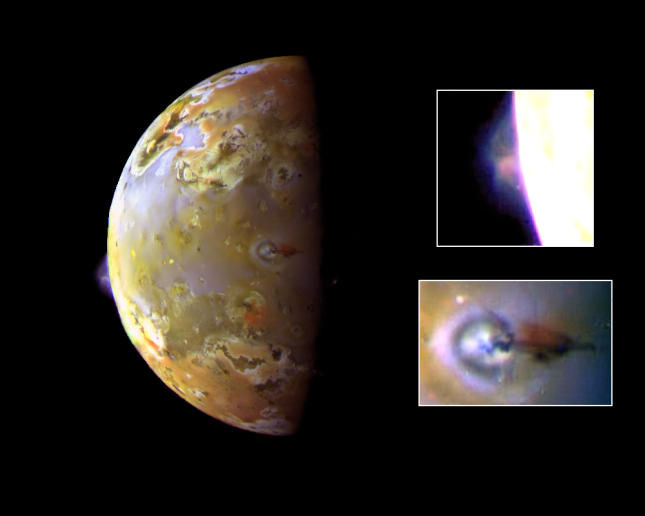 slide15 ==> 11.15: Volcanos on Jupiter's moon Io: on limb (upper inset) and near terminator (lower) (NASA)
slide15 ==> 11.15: Volcanos on Jupiter's moon Io: on limb (upper inset) and near terminator (lower) (NASA)
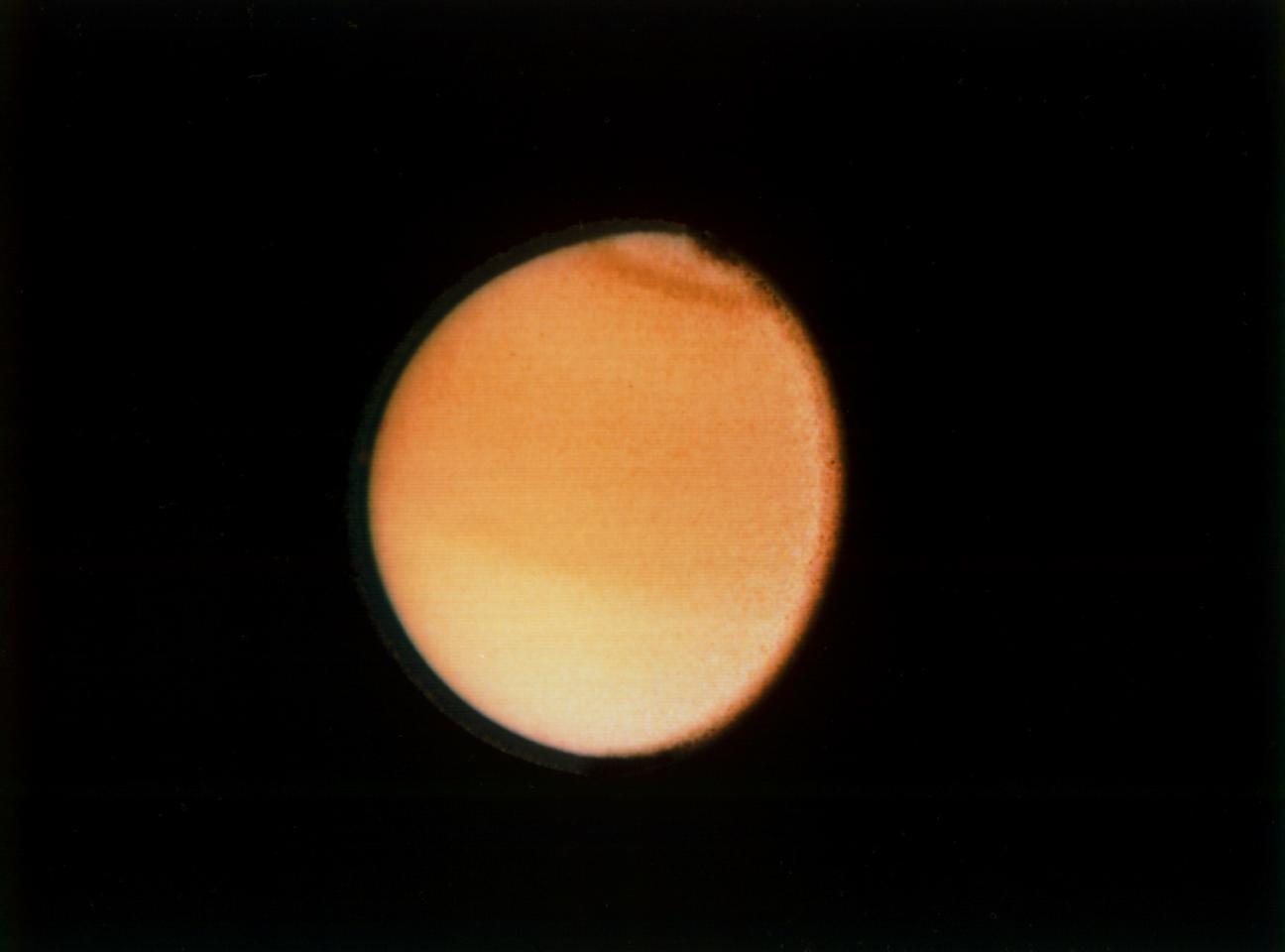 slide16 ==> 11.16: The haze in the nitrogen-rich atmosphere of Saturn's large moon Titan makes the surface invisible (NASA)
slide16 ==> 11.16: The haze in the nitrogen-rich atmosphere of Saturn's large moon Titan makes the surface invisible (NASA)
 slide17 ==> 11.17: Saturn's moon Dione (560 km diameter) is heavily cratered (NASA)
slide17 ==> 11.17: Saturn's moon Dione (560 km diameter) is heavily cratered (NASA)
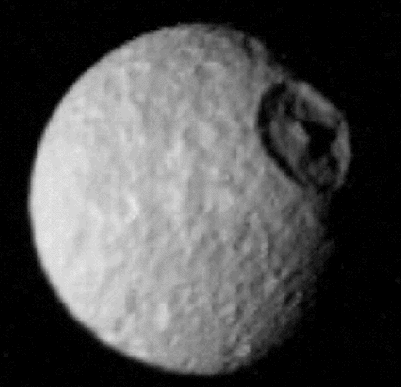 slide18 ==> 11.18: Saturn's moon Mimas has a huge (130-km diameter) crater (NASA)
slide18 ==> 11.18: Saturn's moon Mimas has a huge (130-km diameter) crater (NASA)
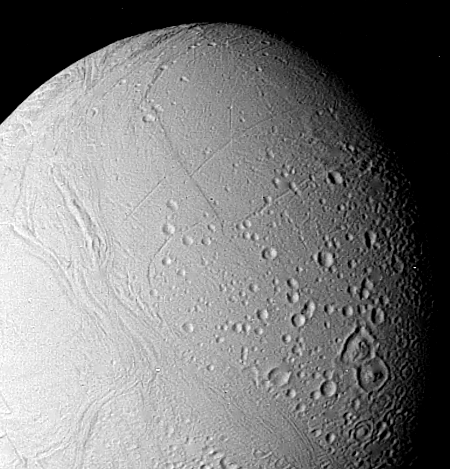 slide19 ==> 11.19: Saturn's moon Enceladus shows a variety of terrain due to tectonic activity (NASA)
slide19 ==> 11.19: Saturn's moon Enceladus shows a variety of terrain due to tectonic activity (NASA)
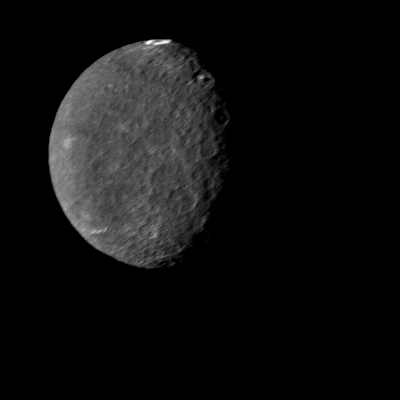 slide20 ==> 11.20: Large craters on Uranus' heavily cratered moon Umbriel (NASA)
slide20 ==> 11.20: Large craters on Uranus' heavily cratered moon Umbriel (NASA)
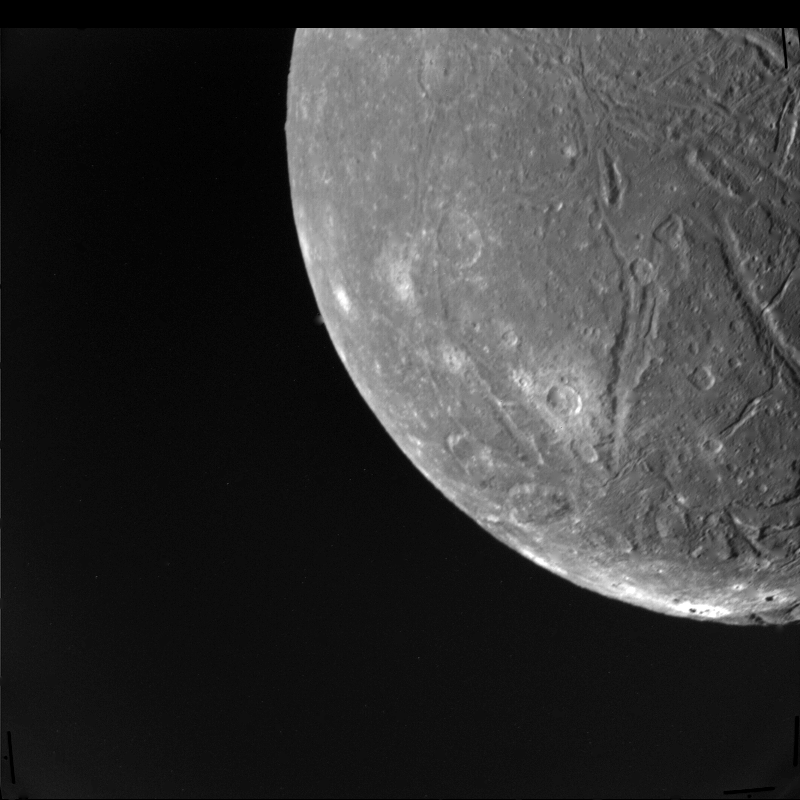 slide21 ==> 11.21: Craters and numerous surface faults on Uranus' moon Ariel (NASA)
slide21 ==> 11.21: Craters and numerous surface faults on Uranus' moon Ariel (NASA)
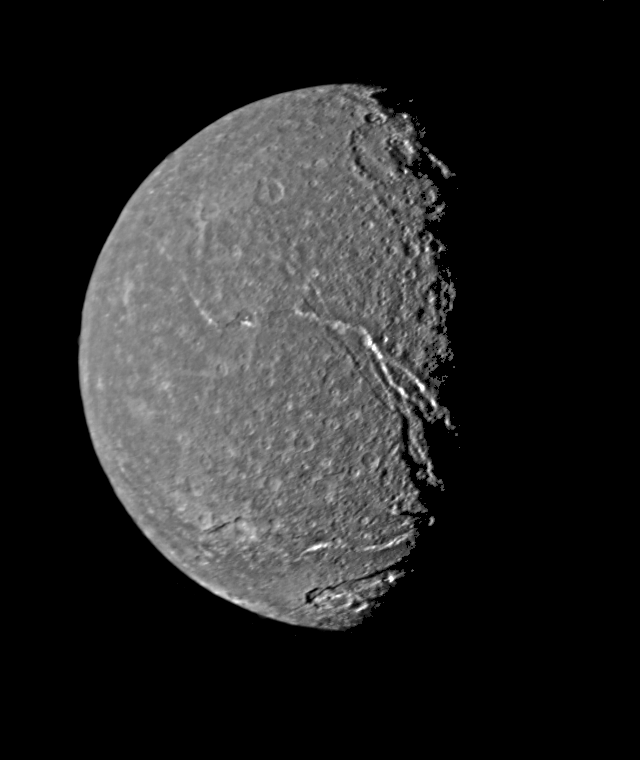 slide22 ==> 11.22: Craters and huge surface faults on Uranus' moon Titania (NASA)
slide22 ==> 11.22: Craters and huge surface faults on Uranus' moon Titania (NASA)
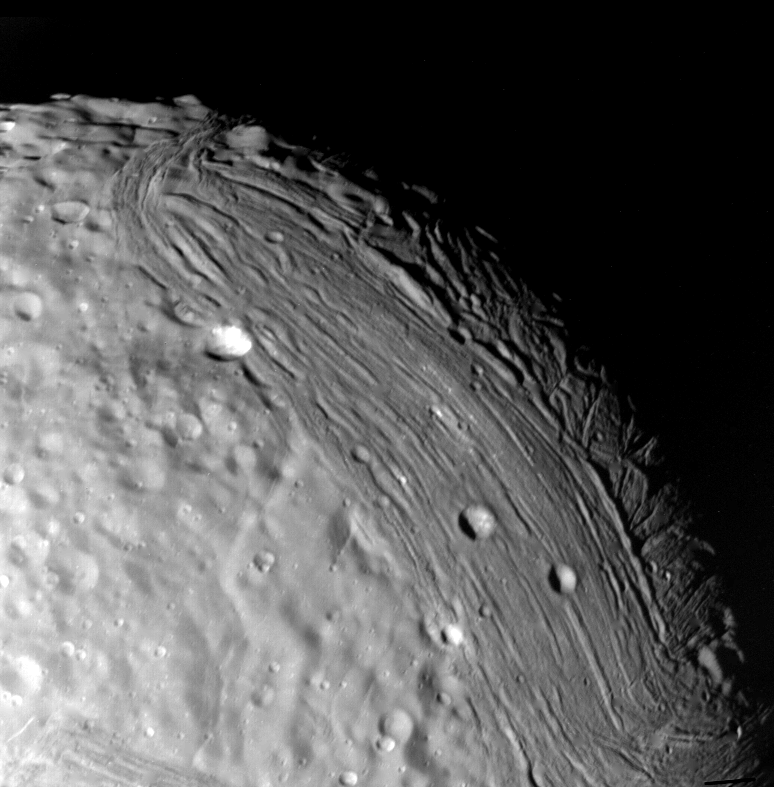 slide23 ==> 11.23: Groove-and-ridge terrain, few craters on Uranus' moon Miranda (NASA)
slide23 ==> 11.23: Groove-and-ridge terrain, few craters on Uranus' moon Miranda (NASA)
 slide24 ==> 11.24: Cantaloupe terrain on Neptune's large moon Triton, probably due to icy volcanism (NASA)
slide24 ==> 11.24: Cantaloupe terrain on Neptune's large moon Triton, probably due to icy volcanism (NASA)
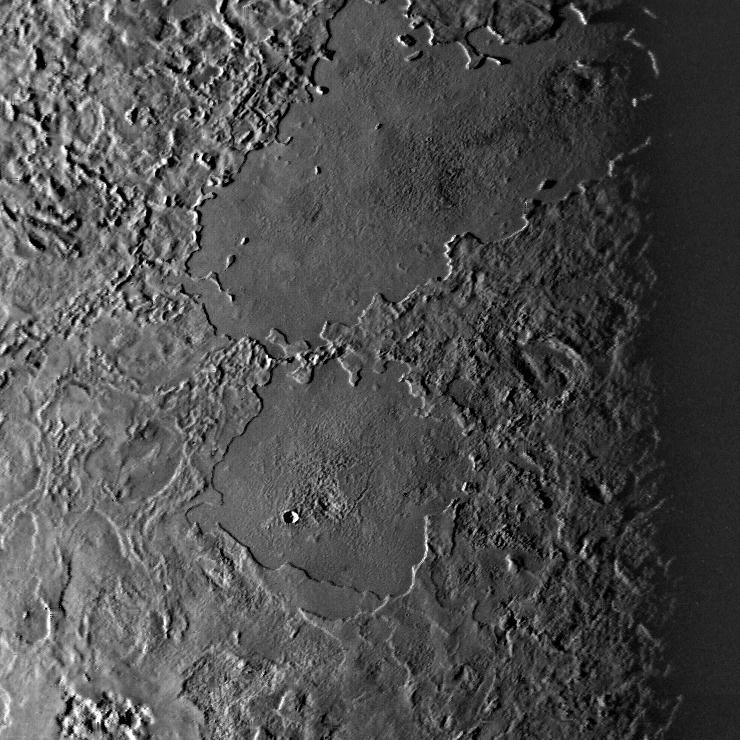 slide25 ==> 11.25: Calderas or lakes, filled with ice, on the young surface of Neptune's moon Triton (NASA)
slide25 ==> 11.25: Calderas or lakes, filled with ice, on the young surface of Neptune's moon Triton (NASA)
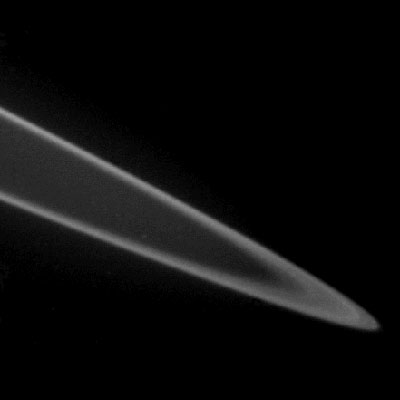 slide26 ==> 11.26: A view of Jupiter's ring from beyond the planet (NASA)
slide26 ==> 11.26: A view of Jupiter's ring from beyond the planet (NASA)
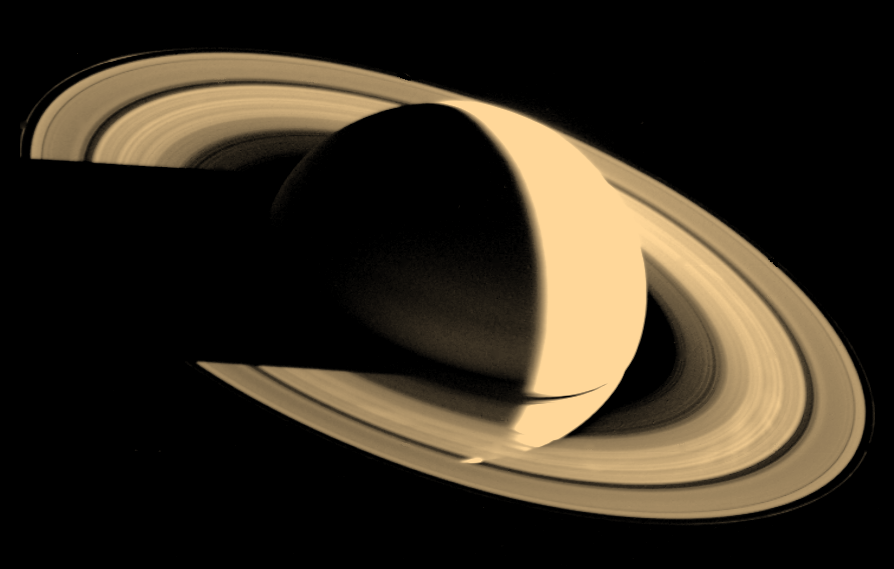 slide27 ==> 11.27: Saturn's ring system has several distinct rings, some with many individual strands (NASA)
slide27 ==> 11.27: Saturn's ring system has several distinct rings, some with many individual strands (NASA)
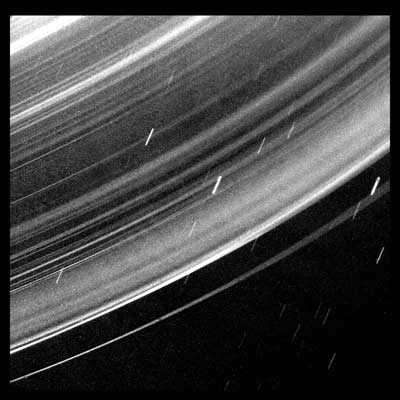 slide28 ==> 11.28: A close-up view of some of the many rings of Uranus, bright ones embedded in wider dusty bands (NASA)
slide28 ==> 11.28: A close-up view of some of the many rings of Uranus, bright ones embedded in wider dusty bands (NASA)
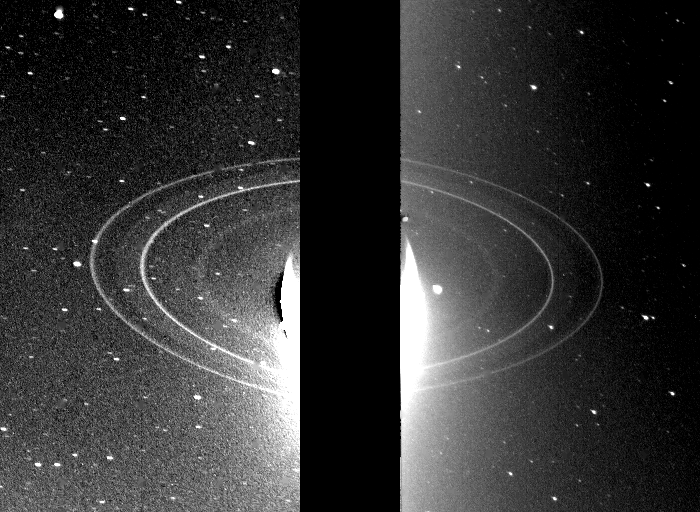 slide29 ==> 11.29: Two bright rings of Neptune with wider dusty rings between (NASA)
slide29 ==> 11.29: Two bright rings of Neptune with wider dusty rings between (NASA)
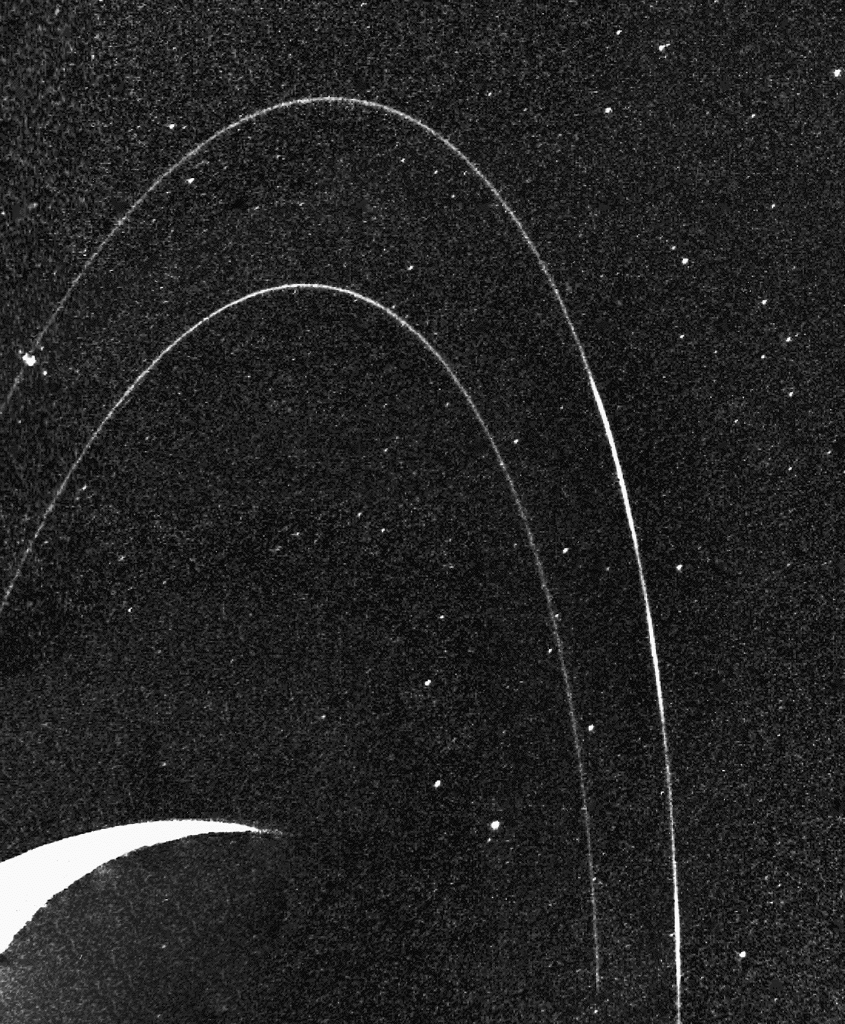 slide30 ==> 11.30: Neptune's inner bright ring is uniform, but the outer shows distinct bright segments (NASA)
slide30 ==> 11.30: Neptune's inner bright ring is uniform, but the outer shows distinct bright segments (NASA)
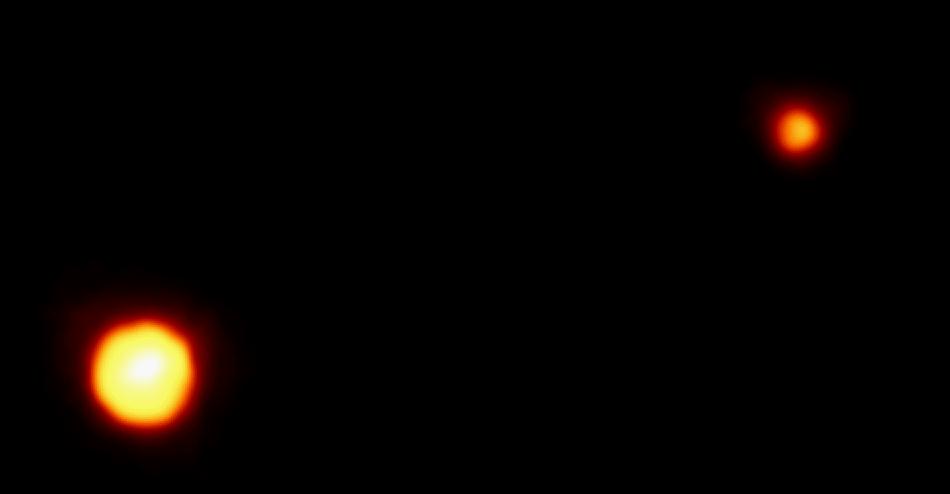 slide31 ==> 11.31: HST took this picture of Pluto (the brighter object) and its moon Charon (NASA)
slide31 ==> 11.31: HST took this picture of Pluto (the brighter object) and its moon Charon (NASA)